
Islet or shore for aquatic turtles
Most aquatic turtles, including red-eared and bog turtles, need a small heated area of completely dry land. Turtles breathe atmospheric air, and also need to rest; without an island, the animal can drown. Also, the presence of sushi will prevent some diseases of the shell. An ultraviolet lamp and an incandescent lamp should be located above the island.
The size of the island should be 3-4 turtle sizes in length and width, or 2 sizes the sum of the sizes of all the turtles in the tank.
Some species of turtles prefer underwater shelters, if you can do this using an island, then the turtle will love it. Shelter on land aquatic turtles do not need.
Contents
 What should be an island for an aquatic turtle?
What should be an island for an aquatic turtle?
- Accessible to the turtle – so that the turtle can easily climb onto land;
- Rough – both the island and the ladder to it should not be smooth, otherwise the turtle will slide;
- Durable – the land must support the weight of the turtle, must be stable so as not to crush the animal;
- Absolutely dry – no water should be poured onto it, i.e. the island should be above the water level – the only way the turtle can dry and warm up;
- No higher than 20 cm from the top of the aquarium so that lamps can be installed and the turtle cannot escape from the aquarium.;
- Heated – above the island there must be a heating lamp and an ultraviolet lamp (because water practically does not transmit UV rays), the temperature on the island must be higher than the water temperature, about 30-31 C;
- Made of durable and non-toxic materials – styrofoam islands, or those glued with small pebbles that a turtle can swallow, are categorically not suitable; it is impossible that there are strips of silicone sealant on the island, the turtle can eat it;
- The ladder from the island should not be located close to the bottom, otherwise the turtle may get stuck between the bottom of the aquarium and the ladder, and drown.
You can make different versions of the islands yourself, order at an aquarium workshop or buy at a pet store:
Islands of glass covered with pebbles
A piece of glass of the required size is cut out (under 1,5-2 turtle sizes), stones are glued on it, and then it is glued into the aquarium on an aquarium sealant (glue). The aquarium must be empty and dry. The turtle can be populated 2-3 days after the aquarium has been ventilated.
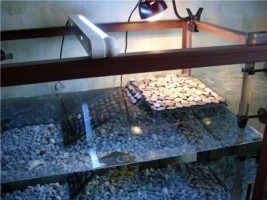
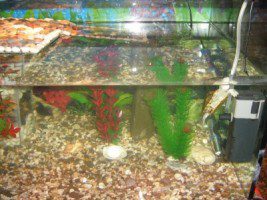
island of tiles
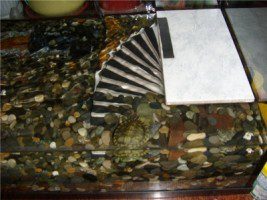
island of wood
Buy ready-made or glue yourself. 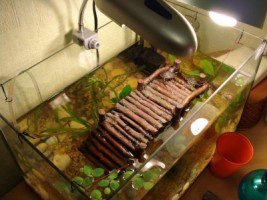
Island of stones
Large stones must first be washed with soap and boiled water.
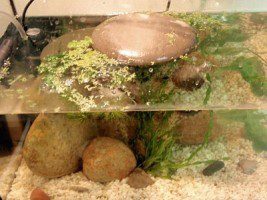
hanging island
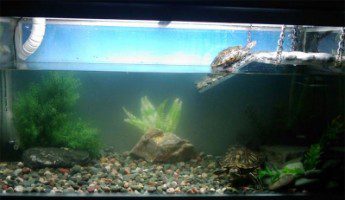
Islands of glass covered with rugs
Such islands are pasted over with rubber mats “under the grass” or for a bath.
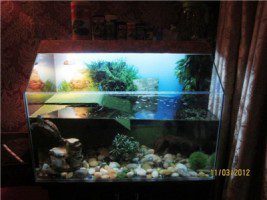
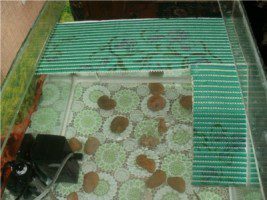
Islet on Zoomed suction cups
Such a coast can be bought at a pet store with a department of goods for reptiles or ordered from an online pet store in ours or abroad. The shores from Zoomed can withstand large turtles, and the shores from Exoterra tilt, and then they need to be propped up.
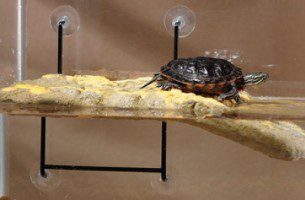
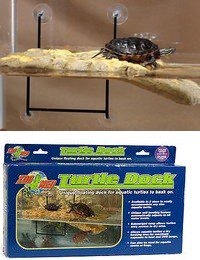
Hinged shore for an aquarium (or shore in American style)
There is also a Turtle Topper hanging bank, which is placed on top of narrow aquariums. You can buy it in foreign Internet pet stores.
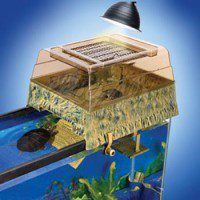


Trionics and other completely aquatic freshwater turtles do not need land, but they crawl out close to the water’s edge to bask.
Other island options are:
- floating rafts made of light material. They are not very suitable, because. a heavy turtle will sink such a raft and it will be difficult for her to climb onto it.
- snags, branches. This is a good bank, which allows the turtle to dry out not only from above, but also from below, but an improperly processed snag will spoil the water and rot. How to properly handle snags …
Why can’t a turtle come ashore?
There may be several reasons why the aquatic turtle, which is accustomed to spending time on land, does not use it. For example, if going ashore is inconvenient, then the turtle will sit in the water and become covered with diatoms, which cause erosion of the shell, but thanks to molting, this is not a problem. Also, the water in the aquarium will be warmer than the air on land. Then it would not make sense for the turtle to get out to bask on land, since it is already warm in the water. However, sitting in water for a long time without drying out can lead to the development of bacterial diseases.



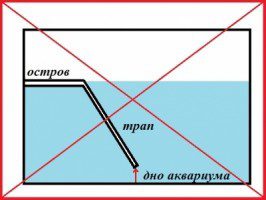 What should be an island for an aquatic turtle?
What should be an island for an aquatic turtle?

